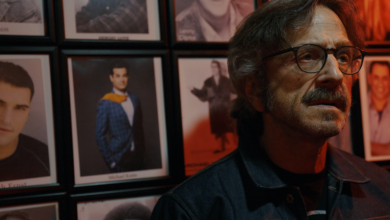Top 8 Characters From Jurassic Park Ranked: From Dennis Nedry to Ian Malcolm

Since its groundbreaking release in 1993, Jurassic Park has not only set new standards in CGI and practical effects but also given us memorable characters who remain fan favorites across generations. From scientists and adventurers to villains and skeptics, these characters have defined the franchise just as much as the dinosaurs. Here’s a ranking of the best characters from the Jurassic Park movies, from least favorite to most iconic.
8. Dennis Nedry (Jurassic Park, 1993)
Played by Wayne Knight, Nedry is the true villain of the first film. His corporate espionage compromises the park’s security, putting lives in danger. Sloppy, selfish, and short-sighted, his downfall at the claws of a Dilophosaurus is poetic justice.
7. Claire Dearing (Jurassic World Trilogy)
Played by Bryce Dallas Howard, Claire begins as a cold, pragmatic park manager but evolves into a compassionate protector. Her transformation into a courageous leader who puts family above profit is central to the modern trilogy.
6. Robert Muldoon (Jurassic Park, 1993)
The level-headed game warden portrayed by Bob Peck is one of the few characters who truly understands the dinosaurs’ danger. Brave and pragmatic, Muldoon’s tragic death at the hands of the raptors he respected remains unforgettable.
5. Owen Grady (Jurassic World Trilogy)
Played by Chris Pratt, Owen is a Navy veteran and Velociraptor trainer. He balances confidence and resourcefulness with emotional depth, evolving into a protective figure who embodies the heart of the newer films.
4. Dr. Ellie Sattler (Jurassic Park, Jurassic Park III, Jurassic World Dominion)
Portrayed by Laura Dern, Dr. Sattler is a fearless paleobotanist with sharp instincts and intelligence. She challenged stereotypes of women in Hollywood, making her an inspirational figure who continues to shine decades later.
See More ...
3. Dr. Alan Grant (Jurassic Park, Jurassic Park III, Jurassic World Dominion)
Played by Sam Neill, Grant is a renowned paleontologist who prefers fieldwork. His arc — from awkward with kids to protective guardian of Hammond’s grandchildren — adds heart to the original trilogy.
2. John Hammond (Jurassic Park, The Lost World)
The eccentric park creator, played by Richard Attenborough, is delusional yet well-intentioned. Obsessed with spectacle, Hammond embodies the hubris of science without limits, but later learns humility as he confronts the dangers of his creation.
1. Dr. Ian Malcolm (Jurassic Park, Jurassic World: Fallen Kingdom, Jurassic World Dominion)
The franchise’s most culturally iconic character, played by Jeff Goldblum, is the perfect mix of wit, sarcasm, and philosophy. His legendary warning — “Life finds a way” — and his chaos theory expertise make him both the voice of reason and the most beloved figure in the saga.




